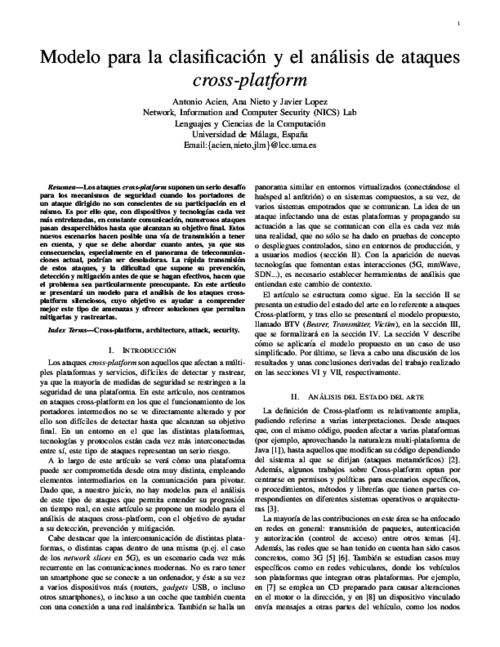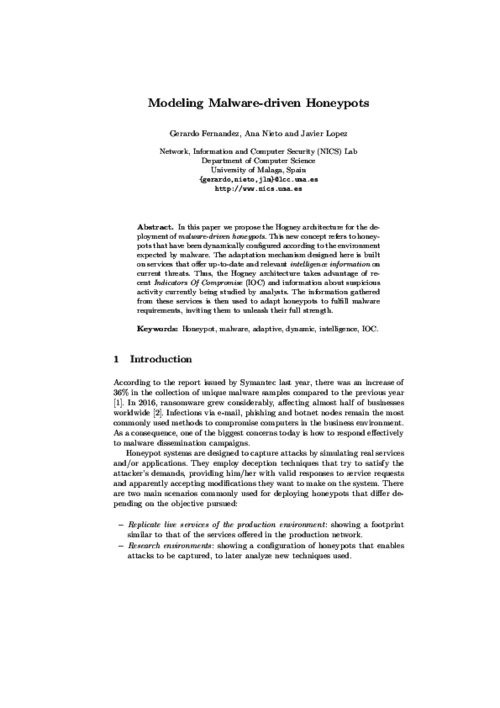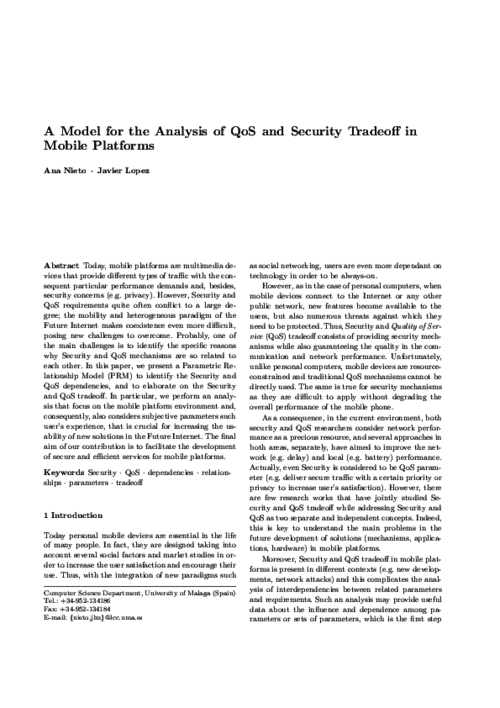 ] Type Year
] Type Year IV Jornadas Nacionales de Investigación en Ciberseguridad (JNIC 2018), Servicio Editorial de Mondragon Unibertsitatea, 06/2018.
Abstract
Los ataques cross-platform suponen un serio desafío para los mecanismos de seguridad cuando los portadores de un ataque dirigido no son conscientes de su participacion en el mismo. Es por ello que, con dispositivos y tecnologías cada vez mas entrelazadas, en constante comunicación, numerosos ataques pasan desapercibidos hasta que alcanzan su objetivo final. Estos nuevos escenarios hacen posible una vía de transmision a tener en cuenta, y que se debe abordar cuanto antes, ya que sus consecuencias, especialmente en el panorama de telecomunicaciones actual, podrían ser desoladoras. La rapida transmisión de estos ataques, y la dificultad que supone su prevencion, detección y mitigación antes de que se hagan efectivos, hacen que el problema sea particularmente preocupante. En este artículo se presentará una arquitectura para el analisis de los ataques cross-platform silenciosos, cuyo objetivo es ayudar a comprender mejor este tipo de amenazas y ofrecer soluciones que permitan mitigarlas y rastrearlas.

14th International Conference On Trust, Privacy & Security In Digital Business (TrustBus 2017), vol. 10442, Springer International Publishing, pp. 130-144, 08/2017. DOI
Abstract
In this paper we propose the Hogney architecture for the deployment of malware-driven honeypots. This new concept refers to honeypots that have been dynamically configured according to the environment expected by malware. The adaptation mechanism designed here is built on services that offer up-to-date and relevant intelligence information on current threats. Thus, the Hogney architecture takes advantage of recent Indicators Of Compromise (IOC) and information about suspicious activity currently being studied by analysts. The information gathered from these services is then used to adapt honeypots to fulfill malware requirements, inviting them to unleash their full strength.

Mobile Networks and Applications (MONET) Journal, vol. 19, issue 1, Springer US, pp. 64-78, 02/2014. DOI
Abstract
Today, mobile platforms are multimedia devices that provide different types of traffic with the consequent particular performance demands and, besides, security concerns (e.g. privacy). However, Security and QoS requirements quite often conflict to a large degree; the mobility and heterogeneous paradigm of the Future Internet makes coexistence even more difficult, posing new challenges to overcome. Probably, one of the main challenges is to identify the specific reasons why Security and QoS mechanisms are so related to each other. In this paper, we present a Parametric Relationship Model (PRM) to identify the Security and QoS dependencies, and to elaborate on the Security and QoS tradeoff. In particular, we perform an analysis that focus on the mobile platform environment and, consequently, also considers subjective parameters such user’s experience, that is crucial for increasing the usability of new solutions in the Future Internet. The final aim of our contribution is to facilitate the development of secure and efficient services for mobile platforms.

16th IEEE International Conference On Trust, Security And Privacy In Computing And Communications (TrustCom 2017), IEEE, pp. 626-633, 08/2017. DOI
Abstract
The Internet of Things (IoT) brings new challenges to digital forensics. Given the number and heterogeneity of devices in such scenarios, it bring extremely difficult to carry out investigations without the cooperation of individuals. Even if they are not directly involved in the offense, their devices can yield digital evidence that might provide useful clarification in an investigation. However, when providing such evidence they may leak sensitive personal information. This paper proposes PRoFIT; a new model for IoT-forensics that takes privacy into consideration by incorporating the requirements of ISO/IEC 29100:2011 throughout the investigation life cycle. PRoFIT is intended to lay the groundwork for the voluntary cooperation of individuals in cyber crime investigations.
